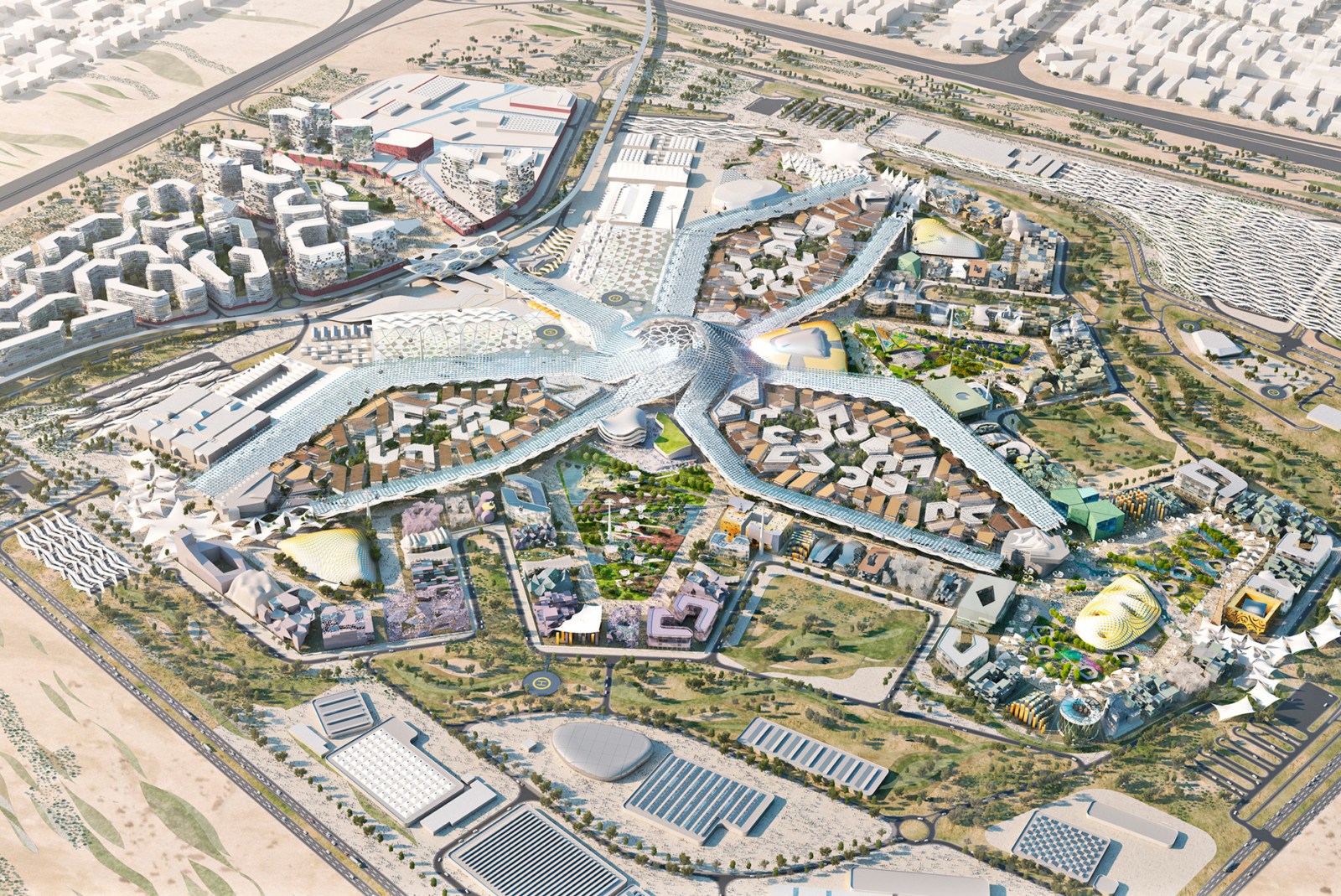HOK’s Daniel Hajjar says sustainability was always at the heart of the plan for the world’s fair in Dubai.
With Expo 2020 Dubai drawing to a close at the end of March, UAE’s The National interviewed Daniel Hajjar, managing principal for HOK in the Middle East and Europe, about the original master plan for the world’s fair and the firm’s other work in the region. HOK’s London-based Director of Sports + Entertainment John Rhodes also was part of the team that worked on the plan.
The plan ensured that the site could transition into being part of the city’s fabric after the event. About 80 percent of the world’s fair structures will remain in some form.
The article also highlighted several other HOK projects in the region, including the Abu Dhabi National Oil Company Headquarters; the six residential, high-rise towers and 64 villas completed in the first phase of the Dubai Marina community; the new Etihad Arena on Yas Island; the 80-story Public Investment Fund Tower in Riyadh, Saudi Arabia; the Central Bank of Kuwait; and the Yiti and Yenkit residential and resort development in Oman.
Excerpted from The National:
HOK was the lead design firm on the original master plan, which was submitted to World Expos in 2012, with Dubai winning the bid on November 27, 2013, against four other cities.
The 4.38 square-kilometre area will be repurposed to host 145,000 residents and workers. More than 600 start-ups and small businesses from around the globe already want to be the first tenants of District 2020, the name of the legacy site, which will open in October.
The $8 billion Expo development forms a large part of Dubai’s 2040 Urban Master Plan, with the area helping to house a projected population of 5.8 million. “[An Expo] is a significant investment for Dubai to make. So, fundamentally, it’s the responsible thing to do to try to keep as much of it as you can,” says Mr Hajjar, who divides his time between the firm’s London and Dubai offices.
What is key about this transformation is that 80 percent of the structures will remain in some form, with the aim of creating a sustainable development as a focal point of the original master plan, says Mr Hajjar.
The HOK team visited other expo cities to understand their strategies after the events ended. In Shanghai, for example, they found 95 per cent of the pavilions had been removed. “As a result, Dubai is one of the first Expos to change that rule fundamentally,” Mr Hajjar says. “Not only is [removing everything], an irresponsible thing to do from an environmental perspective, it also creates this gap within the city fabric.”
HOK came up with the first legacy plan, asking itself some key questions such as “how does the site transition into being part of your city because eventually, after the event, you’re going to be relying on your citizens who live there to make it viable”, says Mr Hajjar.
That focus on sustainability was key from the outset, says Mr Hajjar. It formed one of its sub-themes along with mobility and opportunity, with the extension of the Dubai Metro central to making it all happen. “How can you have a sustainable Expo, if people are going to get in their cars and drive there?” says Mr Hajjar, highlighting the necessity for the extension of the vital transport link.
The build and delivery of the event is also testament to Dubai and the UAE’s wider commitment and drive when it comes to ensuring a project goes ahead. “That’s one thing I give the Emirates and region credit for—once they agree a plan and go forward, they execute it very well,” says Mr Hajjar.
